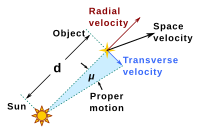
Photo from wikipedia
W e read with great interest the article by Lee et al. The authors conducted their study to determine whether pseudarthrosis after anterior cervical discectomy and fusion (ACDF) can be… Click to show full abstract
W e read with great interest the article by Lee et al. The authors conducted their study to determine whether pseudarthrosis after anterior cervical discectomy and fusion (ACDF) can be predicted from specific preoperative radiograph measurements. The clinical importance of the paper was undisputed. However, in the study, postoperative pseudarthrosis was diagnosed merely based on the interspinous motion on dynamic radiographs. Therefore, we have some concerns about this article. Currently, there is no gold standard imaging examination to determine fusion status. Dynamic flexion-extension radiographs and computed tomography (CT) has been used for determining pseudarthrosis most frequently. Despite of great radiation exposure and cost, CT has been commonly considered the most accurate radiographic examination. Although dynamic radiographs is cheaper and produce less radiation than CT, it has been considered unreliable and there has been no standard motion criteria to diagnose pseudarthrosis. Song et al believed that the accuracy of dynamic radiographs in detecting pseudarthrosis was similar to that of CT when the diagnostic criterion was set as interspinous process motion >1 mm with superjacent interspinous process motion 4 mm. They explained that the criterion of interspious process motion was used to detect pseudarthrosis and the criterion of superjacent interspinous process motion was used to determine whether dynamic flexion-extension radiographs demonstrated adequate motion. The diagnostic criterion was adopted by Lee et al. In the study, there were 29 patients who underwent ACDF at two levels and six patients at three levels. Theoretically, if the operated levels were adjacent, the superjacent level was fused and its decreased interspinous process motion could not be used to determine whether dynamic flexion-extension radiographs accorded with requirement. In this case, the diagnostic criterion was inaccurate to assess fusion condition of the lower level and could underestimate the fusion rate. The article demonstrated that increased preoperative segmental motion could raise the occurrence of pseudarthrosis after surgery. However, many studies suggested that some motion can occur between spinous processes because of elastic deformation of bone and facet joints even with solid fusion. Thus, the increased preoperative segmental motion was probably caused by elastic deformation of bone and facet joints, which could raise the interspinous process motion even though the segment was fused. As a result, increased segmental motion was likely to make the diagnostic criterion incorrect and overestimate the fusion rate. In conclusion, we believed that the diagnostic criterion proposed by Song et al should be used to detect pseudarthrosis after single level ACDF. Moreover, when studying the correlation between preoperative radiographic parameters and pseudarthrosis, it would be better to use CT rather than dynamic radiographs to evaluate fusion status.
Journal Title: Spine
Year Published: 2017
Link to full text (if available)
Share on Social Media: Sign Up to like & get
recommendations!